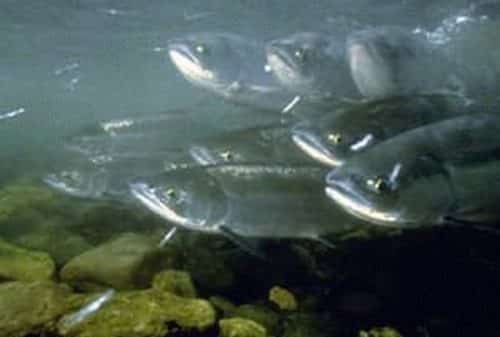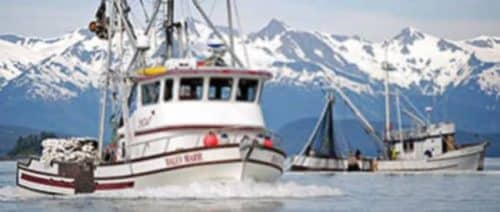
Commercial harvests of wild salmon in Alaska rose by more than 10 million fish between July 17 and July 22, bringing the total preliminary catch estimate to 60,530,000 fish.
That included nearly 43 million sockeyes, 9.1 million chums, roughly 8 million pink, 356,000 silver and 179 Chinooks, according to estimates by the Alaska Department of Fish and Game.
The harvest surge brought more sockeyes quickly into retail markets in the Pacific Northwest, including some areas that just weeks earlier were offering only refreshed fillets from the 2017 harvest.
Seattle’s Pike Place Fish Market had wild Alaska sockeye fillets for $17.99 a pound. Whole sockeyes for $54.99 apiece, and quarter pound Copper River salmon burgers for $4.99. Costco stores in Anchorage offered wild Alaska sockeye fillets for $9.99 a pound, which was the same price as Safeway’s weekly special for shoppers with the store card, while at Fred Meyers the sockeye fillets were $12.99 a pound.
Anchorage seafood specialists 10th & M Seafoods was advertising online its wild Alaska sockeye steaks for $7.95 a pound and wild king salmon fillets at $23.95 a pound. Online Anchorage retailer FishEx was offering wild Alaska king fillets for $59.95 a pound and $29.95 a pound for wild sockeye fillets. FishEx’s Yukon king fillets were $89.95 a pound and Copper River king fillets were $79.95 a pound, but they were sold out on July 22.
In Bristol Bay, where processors were paying $1.25 a pound for sockeyes, not including bonuses, the harvest in the Nushagak district led all others with an estimated harvest of 24.6 million salmon, including 23.4 million reds, 1.2 million chums and 35,000 Chinooks. The Naknek-Kvichak district saw over 7 million salmon, all sockeyes except for about 1,000 kings. Harvesters in the Egegik district brought in 4.7 million reds, while in the Ugashik district the catch included 2.1 million sockeyes and 1,000 kings.[xyz-ihs snippet=”Adversal-468×60″]
Processors in the Alaska Peninsula received more than 4 million salmon through July 22, and Prince William Sound processors handled over 11 million salmon. In Southeast Alaska deliveries included over 3 million fish while some 1.3 million were received in Cook Inlet.
On the Lower Yukon the harvest climbed to 465,000 keta salmon and 36,000 humpies. The Lower Yukon River districts transitioned to the fall season management on July 16, with the run of chums projected to be 700,000 to 900,000 fish. Jack Schultheis of Kwik’Pak Fisheries, with processing facilities in Emmonak, said that small boat fishery was going well.
Fishermen’s News Online grants permission to the Alaska Native News to post selected articles. Read More at: Fishermen’s News Online.







